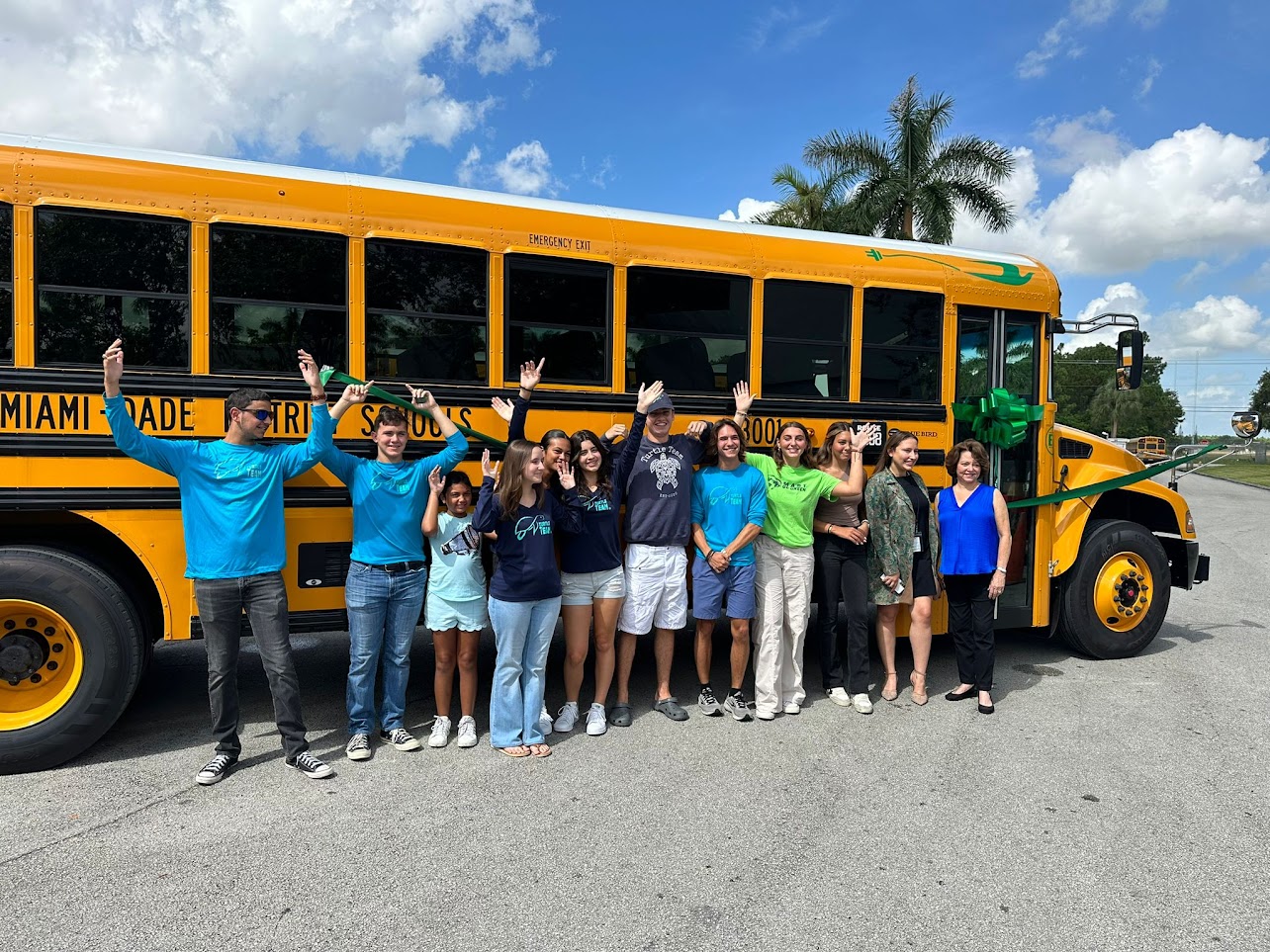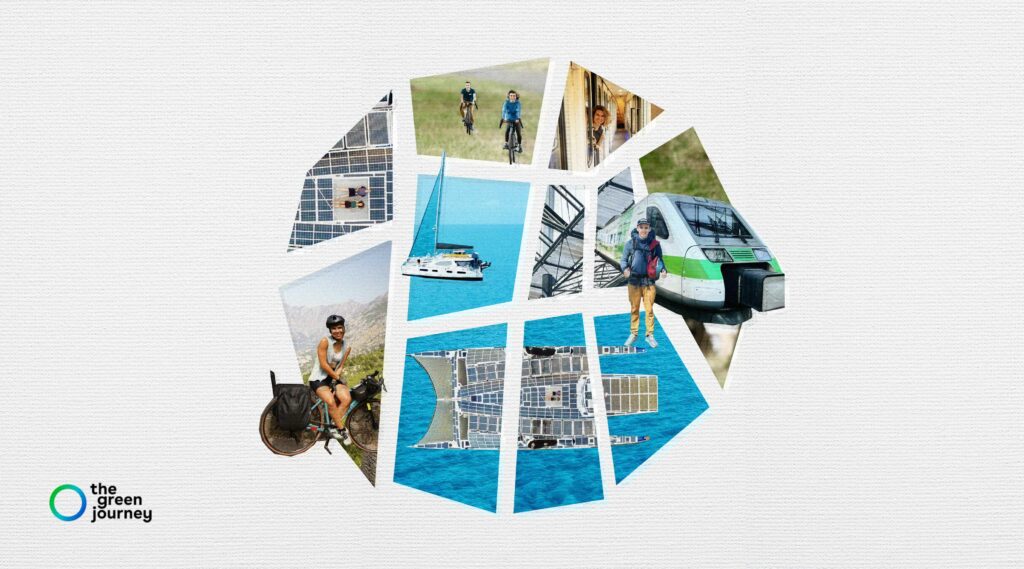Over the past few years, Generation180 has been supporting and uplifting the clean energy progress underway at Miami-Dade County Public Schools (M-DCPS), the third largest public school district in the U.S. serving over 331,000 students. In 2021, Generation180 provided resources to student advocate Thomas Brulay (who later became a Gen180 intern) and PTA leader Michele Drucker, to help them advocate to the M-DCPS School Board to adopt a resolution committing to 100% clean energy by 2030 — an inspiring grassroots story we wrote about in our 2022 Brighter Future Report. Michele Drucker became vice-chair of the district’s Clean Energy 2030 Task Force, which was charged with developing recommendations for how the district would achieve this ambitious goal. In April 2022, the task force released its Clean Energy 2030 Report, and one of the key recommendations was to create a new staff position to coordinate and accelerate these efforts and ensure accountability towards reachi ng these goals.
ng these goals.
Karly Pulido filled the position of Sustainability Officer in August 2022 and immediately began making significant contributions toward the district’s goal. M-DCPS is now a nationwide leader in school transportation electrification with 100 electric school buses currently on the road or on order. Karly recently helped the district win a $19.75 million grant from the EPA’s Clean School Bus Program to cover the costs of 50 ESBs and 16 fast chargers. By 2026, the district expects 1 of every 10 buses to be electric.
We were excited to connect with Karly Pulido about her work implementing the clean energy goals that local student and parent advocates began calling for years ago. She tells us about the challenges she has faced working in a large school district, and the inspiration she’s found that keeps her moving forward. Here is that interview edited for length and clarity. Enjoy!
________________________
The district enrolled in our local utility’s community solar program, which provides renewable electricity for 45% of total electricity consumption and will return nearly $13 million to the district over its lifetime. A culture of sustainability will bring money back to the classroom — our district should be very proud.
How did you start working in school district sustainability?
While working in a high school in Uganda as a Peace Corps Volunteer, I found working with young people to be empowering and refreshing. Later in my career, while I was pursuing my master’s degree of sustainable system engineering, I enrolled in a building efficiency class that assigned ASHRAE’s Advanced Energy Design Guidelines for K-12 schools as a reading assignment. My experience as a classroom leader in Uganda came to mind while reading the guidebook, which addresses achieving net-zero energy in schools. I imagined all the gaps that exist in our buildings and our global school systems as a whole and decided that’s where I wanted to make an impact. While completing my master’s degree, I began my career in school district sustainability at Orange County Public Schools in Orlando, FL, as the Sustainability Coordinator in 2020.
What surprised you about working in sustainability at school districts?
What surprised me is how amazing the community is. Not only do I work with some of my best friends, but we are all fighting the same fight together. Working in sustainability in any sector is never easy, but the way NGOs, other government entities, and the private sector come together to help us push forward is truly inspiring. For example, my position wouldn’t exist if it weren’t for community members and experts in South Florida working together to develop the Clean Energy 2030 Report that recommended hiring a Sustainability Officer for M-DCPS. None of the progress made so far has been a single-person show and nothing would be possible without the strong community that backs these efforts.
What is something you are proud of during your time at Miami-Dade County Public Schools?
I am proud to be an instrumental piece in creating a districtwide culture of sustainability that will change the way future generations view and navigate this world. I always say that it takes a day to create a policy and a decade to create a culture. I am so grateful to be on the forefront of these changes that are slowly creating a culture of awareness and responsibility in M-DCPS schools.
Showing that sustainability pays for itself has been rewarding. The district enrolled in our local utility’s community solar program, which provides renewable electricity for 45% of total electricity consumption and will return nearly $13 million to the district over its lifetime. A culture of sustainability will bring money back to the classroom — our district should be very proud.
None of the progress made so far has been a single-person show and nothing would be possible without the strong community that backs these efforts.
What has been the most challenging part of advancing sustainability in the school district and how did you overcome that?
Personally, it is challenging to practice patience and remember that it’s easier to steer a sailboat than it is to turn a big ship. Being the third largest school district in the U.S. comes with unique challenges, and there are always competing priorities. Many often misunderstand that sustainability needs to be part of all solutions. Going back to the basics, we know the triple bottom line includes people first. As dedicated employees of the school district who are tirelessly striving to provide the best education to our students, it’s easy to overlook that every sustainability initiative not only enhances the well-being of our planet, but most importantly of our students. For those new to sustainability, understanding that efforts, such as implementing clean school buses, adopting renewable energy sources, and managing waste, ultimately benefit the classroom can be difficult at first. However, it’s essential to recognize that these initiatives come full circle and the positive impacts will undoubtedly be felt in the classroom.
What inspires you the most about working with school district sustainability?
The students, of course! The decisions we make now won’t just impact the school environment. It’s a chance for students to take home what they’ve learned and share it with their families. And when they move on after graduation, they’ll carry those lessons with them.
What would you share with other school leaders who are interested in pursuing clean energy in their districts but aren’t sure where to start?
If you came with a plan, throw it away. Seriously! Start talking to everyone in your community, build relationships, and identify your champions. Learn what is really going on, since everything is related to sustainability. Instead of coming with more work for already overworked employees, learn about your district’s challenges and work together to develop sustainability-oriented solutions.
How have you partnered with the community – both within and outside of the school district – to expand your impact?
Without the community, this work would be impossible. Whether it’s working with external organizations, like Generation180 or The Cleo Institute, to support our grant programs that brought millions of dollars into the district or working with local universities to conduct food waste and feasibility studies, the support we’ve received has truly helped us move the needle on climate action.
M-DCPS also worked with Miami-Dade County to develop a Memorandum of Understanding, which commits the district to reaching 30% urban tree canopy. This initiative aims to reduce flooding and provide heat equity in communities that need it the most.
The district also opened a Green Fund with the Foundation for New Education Initiatives. The Green Fund supports the advancement of the district’s first internal Green Schools Recognition Program, which encourages local engagement, conservation, and campus beautification and is in alignment with some of the UN’s Sustainable Development Goals. The Green Schools Recognition Program will operate on a $15,000 minimum annual donation and recognizes schools going above and beyond in their efforts to reduce their environmental footprint.

What is one unique fact about your district that only the community would know?
Miami is at the forefront of climate gentrification. In Miami-Dade County, many minority neighborhoods sit at a higher elevation than higher income residents who live on the water. Housing will continue to become more expensive as wealthier residents move inland due to sea-level rise and extreme flooding from weather events. Unfortunately, some of our minority neighborhoods, such as Little Haiti–which sits above sea level, are at risk of an increase in housing displacement because of the increase in prices and influx of wealthier residents. These are challenges that we are facing as a public school district every day. We need to ensure our students are safe and have the access to education that every child deserves.
Project UP-START! is an education program for Children and Youth Living in Unstable Housing in Miami-Dade. M-DCPS assists schools with the identification, enrollment, and attendance of students in unstable housing to help ensure their successful academic achievement. This works to solve climate change displacement in our community. The core of the program is to prevent children and youth in transition from being stigmatized, separated, segregated, or isolated and in doing so, M-DCPS opened a center at Toussaint Louverture Elementary School in Little Haiti to help displaced students and families find tutoring, housing, and basic needs.
What do you see as the biggest opportunities in your role as Sustainability Officer of the third largest school district in the country?
One big opportunity is to transition our mindsets as an organization to focus on conservation. This looks like reducing our energy footprint by decreasing our consumption and expanding our purchases of renewable energy.
However, climate literacy is the largest opportunity that we can use in our conservation toolbox to make an impact. As the largest school district in Florida, I’d like to see us eventually work with state legislators to make climate change education mandatory in Florida, as our peer states California, Connecticut, Maine, New Jersey, and Washington have already done.
The decisions we make now won’t just impact the school environment. It’s a chance for students to take home what they’ve learned and share it with their families. And when they move on after graduation, they’ll carry those lessons with them.















